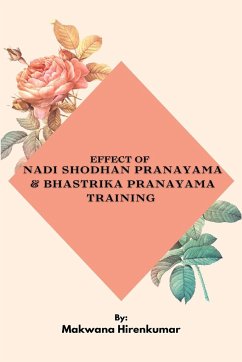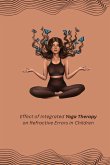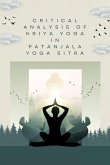When we study the Indian tradition, we understand that yoga principles had been the foundation of Indian culture. The word 'Yoga' itself comes from a Sanskrit word meaning 'yuj' or 'union'. It conveys the idea of harnessing oneself to a discipline and at the same time unifying the parts of the self, body, mind, and spirit. Yoga has a complete message for humanity. It has a message for the human body. It has a message for the human mind and it has also a message for the human soul. Yoga is a very ancient discipline. It is recognized as one of the most important and valuable gifts of Indian heritage. Today the world is looking to yoga for solving the various problems men are facing. At no time in the past yoga has attracted so much attention from people in so many places in the world as it is today. Yoga is an indigenous physical and mental training. French scholar, Masson Ural, has described yoga as the permanent basis of Indian culture. Hence it has its varieties and diversions as it has its right and discipline, the different kinds of yoga have played a vital role in forming the spirit of modern India. The science of posture and training the body by means of the asanas is Hatha yoga. The earliest known written works on Hatha yoga date from the fifteenth century, but it is believed that a thousand years earlier, it was already defined and practiced. The techniques of meditation of observing and making the mind still became known eventually as Raja Yoga ('Raja' means 'King'). Karma yoga is the yoga of action and can be applied to the way we perform everything in our daily life. Gyana Yoga is the yoga of knowledge and of intellect. Bhakti yoga is the devotional path to union. The main paths of yoga, its philosophy, and its relevance to our everyday life are described in the Bhagvad-Gita was written in the sixth century B.C. In India, Yogic exercises were being practiced for thousands of years. It refers to the union of body and mind. Yoga is simple and easy practice, acceptable to people from all walks of life. During the early days, Yoga was confined to be practiced by the chosen few like the Rishies, Sidhas, and Religious heads, Kings, and Princesses. Now it is accepted that Yogic exercises are suitable for all people and are recommended for a long living and healthy life. Patanjali being an important yoga guru, the practice of yoga has also been made systematic by the exponent of the system. Patanjali discusses the nature of enlightenment, the means of attaining it, the obstacles and the problems of practice, and ways of overcoming them. Patanjali lists the eight 'limbs' of stages of yoga, an eight-fold path: namely abstention (Yama) regulations discipline, (Niyama) easy posture (Asana), control of breathing (Pranayama), sense of control (Pratyahara) concentration (Dharana), meditation (Dhyana) and superconscious state (Samadhi). The eight limbs are seen both as progressive stages and as interrelated aspects of yoga practice. Yama and Niyama for the foundation of study and posture and breath control are mastered before meditation. But the more one progresses the more one realizes that the development of the limbs cannot be separated.







